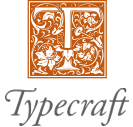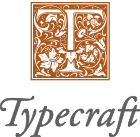Type Design
Designing and producing new custom corporate identity typefaces
Some of the advantages of having a proprietary bespoke typeface:
- You have complete control over the glyph design, which can be customised freely as you wish in order to obtain a unique graphic identity for a stronger brand
- You have complete legal and logistical control over the implementation of the new typeface within your organisation, without any licensing restrictions or additional costs regarding use, distribution or multiple technology platforms
- You can easily extende and update the font as your needs grow
You are welcome to present us either with a basic concept of a design idea (perhaps after some existing model) and then let us provide both the design and the production—or with a more or less final font pre-digitalised in Illustrator, and then let us review and (if deemed necessary) correct or fine-tune this before producing the final master font.
The disadvantage of developing your own custom font compared to buying a commercial font already on the market is a longer delivery time (which requires advance planning) and, depending on the scope of the license required, possibly a higher initial cost. Since each situation is more or less unique, it is not possible to say which approach will suit you best without a thorough analysis of your needs and conditions.
An important aspect in the development of a new custom font is copyright protection.
When you talk about copyright protection in a font context, you can separate this into the following three aspects:
- The typeface name (trademark protection)
- The font file program code (copyright protection)
- The typeface glyph design (pattern protection)
A typeface name can be trademark protected as any other product name (for example, you may not call a new typeface Helvetica, since that is a protected trademark belonging to Linotype), and its program code is equivalent to that of a software application (you can not copy the content from an existing font, make changes to it and then claim it to be a new font). If a font manufacturer allows you to make adjustments to their font, then the new font will be a derivative of the original font that also belongs to the font manufacturer (also note that the practice in such situations is to add an explanatory suffix to the original name, such as "Helvetica For [Customer name]", to clarify that this specific font is a customised derivative work).
The most complicated aspect of copyright protection is the glyph (pattern) design: If you design something completely new from the ground up with a distinct character of its own, you should not encounter any problems. But if you instead choose to start from an existing design, and this could be considered to have sufficiently high originality (degree of uniqueness), you should perhaps not plagiarise this specific design. If the model on the other hand has a more generic basic form (such as Helvetica), it will obviously be more difficult for the original copyright holder to claim plagiarism.
As far as we know, no plagiarism cases have been tried in a court of law with precedent judicial verdicts, so it is difficult even for experienced trademark and intellectual property lawyers to determine exactly where the boundaries between free interpretation and plagiarism lie in the case of fonts. Here it is also important to distinguish between a logotype, consisting of a limited set of glyphs where the pattern protection is quite clear, and a font, consisting of an entire alphabet and many other characters, where the pattern protection arguably appears to be more difficult to interpret.
Our standing recommendation if you intend to be inspired by an existing design (i.e. an existing font) but then make changes to express your own design is to always get advise from a legal expert on copyright law—we are not legal experts, but will be happy to assist you as best as we can with both consultation development/production. However, we can never take over any legal responsibilities or obligations from the client, as it is always the owner/end-user of the new font who is responsible for all legal aspects.



